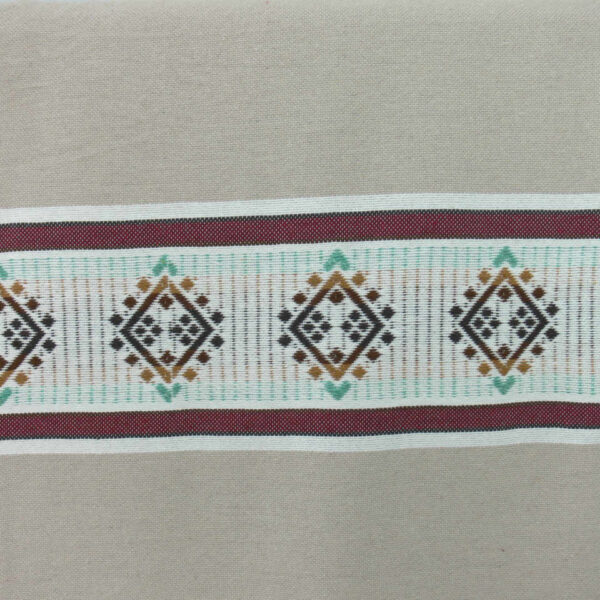Primitive humankind quickly found that the stitches used to join animal skins together could also be used for embellishment. These creative minds then started the use of embroidery to enliven their existence. Hand embroidery is one of the oldest forms of art and craft, with origins dating back to the Cro – Magnon days or 30,000 BC. Recorded history, sculptures, paintings and vases depicting inhabitants of various ancient civilizations show people wearing thread – embroidered clothing. During a recent archaeological find, fossilized remains of heavily hand – stitched and decorated clothing, boots and a hat were found. Furthermore, Chinese thread embroidery dates back to 3500 BC, and examples of surviving Chinese chain stitch embroidery worked in silk thread have also been found and dated to the Warring States period ( 5th – 3rd century BC). Embroidery and most other fiber and needlework arts are believed to originate in the Orient and Middle East.
During 1100 A.D., smaller seed pearls were sewn on vellum to decorate religious items and from the 1200’s through 1300’s beads were embroidered onto clothing. By 1500 A.D., embroideries had become more lavish in Europe, as well as other areas of the world. From this period through the 1700’s elaborate thread and bead embroidery gained popularity. Bead embroidery could be found on layette baskets, court dress, home furnishings and many other items.
Elaborately embroidered napkins clothing, religious objects, and household items have been a mark of wealth and status in many cultures including ancient Persia, India, China, Japan, Byzantium, and medieval and Baroque Europe. Traditional folk techniques were passed from generation to generation in cultures as diverse as northern Vietnam, Mexico, and Eastern Europe. Professional workshops and guilds arose in medieval England. The output of these workshops, called Opus Anglicanum or “English work,” was famous throughout Europe.
In the latter half of the 19th century, however, the manufacture of machine – made embroideries in St. Gallen in eastern Switzerland started to flourish. The process used to tailor, patch, mend and reinforce cloth later fostered the development of sewing techniques, and the decorative possibilities of sewing led to the art of embroidery. Sadly, elaborate freehand stitched thread embroidery began to dwindle with the machine age of the 1800’s when Art needlework and Berlin wool – work appeared on the scene.
Nonetheless, handcrafted embroidery and crochet work hold a special place in the art world, both for their historical and functional uses. From intricate stitches and colorful yarns, handmade items can be transformed into pieces of art that tell a meaningful story or bring joy to the wearer or user.
These works of art are also highly functional, and are often used to decorate fabrics, create warm garments, or bring a unique personal touch to a home. Items such as curtains, bedspreads, and tapestries can be crafted with intricate stitches and patterns. Whether it is a modern traditional cushion cover, or a napkin with intricate hand – embroidery, these handmade items can also be used to make personal and emotional connections. Through a shared story, skill, or culture, handmade embroidery and crochet work can create a strong bond between the maker and the recipient.
The significance of these products goes far beyond their aesthetic appeal. Crafting items with one’s own hands is an art form: one that requires skill, patience, and dedication. It is a practice that has been passed down from generation to generation and is a source of both pride and joy. Handcrafted items can also be a form of self – expression and a way to capture memories, making them more valuable and meaningful than the dull store – bought items.
In this day and age, handmade embroidery and crochet work have more significance than ever. As the world turns to technology for more and more of the daily needs, the act of crafting something by hand has become increasingly rare. By supporting independent makers and artisans, we can help ensure that the tradition of handmade crafts will live on for generations to come.
